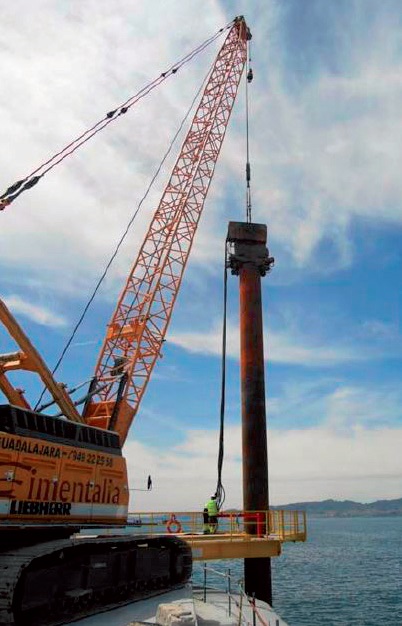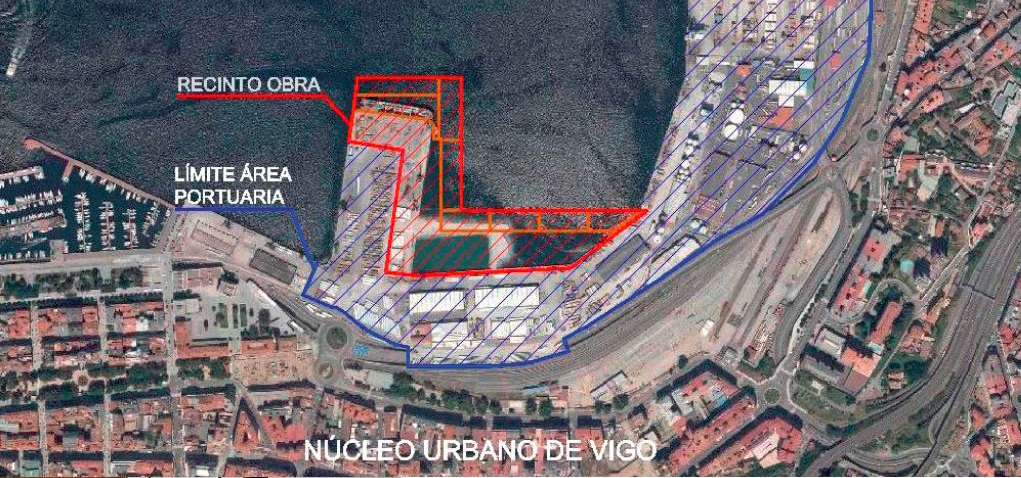Vigo Port Commercial Docks
Description of the Environmental Measure
Problem detected:
Although this is a construction project carried out in a port area, in the case of the city of Vigo, the port is located near the city centre, which meant that the noise generated during the execution of the work could disturb the residents in nearby buildings.
The main activity in this project was pile driving, 60% of which had to be inserted into rock, which entails noise and vibration. Pile driving into rock calls for special tools which either drill into the rock using a percussion hammer or a rotating screw head fitted with wolfram carborundum teeth. Piles to be driven near the sea in turn require vibratory grips, which work by making the steel jacket vibrate; as this vibrates, so does the surrounding material, which reduces the resistance between the drill cylinder and the earth.
In addition to the typical noise and vibrations, the problem worsened given that from the beginning it was envisaged that should delays be caused in driving the piles, it might be necessary to work double shifts, which would have involved further disturbance of the local population as this would mean working at night.
Solutions adopted:
In order to minimise the noise of the work and the repercussions for the residents, an exhaustive study was conducted of the phases of the work and two pile-driving rigs were used whenever the operation permitted. With these two rigs it was possible to meet the deadline while avoiding having to work during the night. Furthermore, during the execution of the work there was no need to carry out tasks on recovering casings lost during night work, although this would have enabled the work to proceed ahead of schedule.
In addition to setting a period during which the work was to be carried out, machinery was procured which would generate the least noise and vibration. The pile-driving was carried out as follows:
- Rotation-drilling rigs with special widia tools for excavation, in order to obviate the need for a vibrohammer, as this tool's blows, fracturing the rock and using a scoop to remove the debris, creates more of a disturbance in terms of noise and vibrations.
- Driving lost casings using a hydraulic variable-frequency vibrohammer, a type of machine that eliminates resonances when it is set in motion and on completion of the job, thereby reducing noise and vibrations to a minimum.
Results:
Thanks to the implementation of these solutions, there were no complaints or protests from the residents or the Authorities. In addition, the monthly readings of the noise level that were taken at five monitoring stations, within the framework of the Environmental Surveillance Plan, show that the relevant regulations were fully complied with, as the readings were 49% below the permitted limit in 2012 and 63% below it in 2013. In order to achieve the reduction in the figures collected in the field with regards to the permitted upper threshold, the values in units of sound pressure (pascales) were compared.










